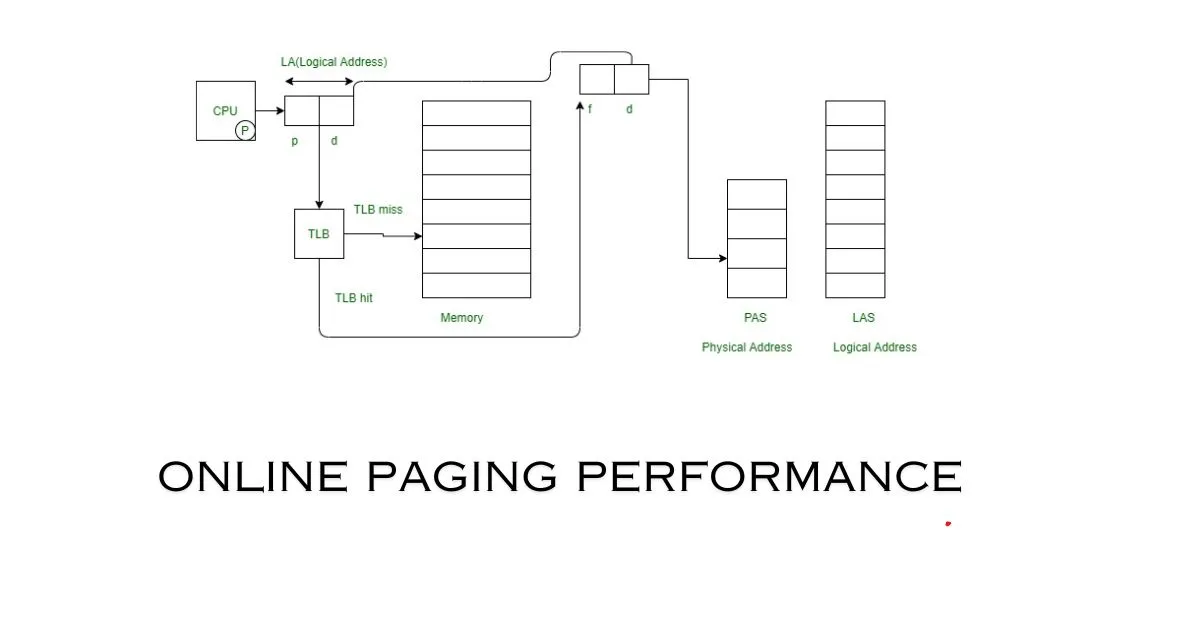General
Nuru Massage: A Slippery Journey to Intimacy and Relaxation

Nuru massage, a sensual body-to-body massage originating from Japan, has gained popularity for its unique combination of friction and sensual techniques, providing a slippery and seductive experience. The term “Nuru” translates to “slippery” in Japanese, reflecting the special gel used in this massage that allows the masseuse to glide effortlessly over the recipient’s body. In this article, we will delve into the world of Nuru massage, exploring its origins, benefits, and its potential to enhance intimacy within relationships. It’s essential to understand that while Nuru massage incorporates sensual elements, it is not solely focused on sexual gratification and can be enjoyed by individuals of all ages and body types.
The Essence of NuruMassage
Nuru massage employs a distinct cream, often referred to as Nuru gel, to create a slippery and frictionless surface on the massage table. This unique gel enables the massage therapist to move smoothly across the recipient’s body, enhancing the overall experience. Despite its sensual nature, Nurumassage is not solely about sexual arousal; it encompasses the benefits of traditional massages, such as stimulating the skin, promoting relaxation, and increasing overall well-being.
Open-mindedness in NuruMassage
One notable aspect of Nurumassage is its openness to diverse clients, including individuals of all ages, body types, and even same-sex couples. This inclusivity reflects the versatility of Nurumassage as a therapeutic and intimate experience that transcends traditional boundaries. Couples, whether seeking to revitalize their relationship or exploring their sexuality, can find Nuru massage to be a safe and private space for connection.
Hygiene and Safety in Nuru Massage
To ensure a safe and hygienic experience, practitioners of Nurumassage typically use gloves. This precautionary measure not only maintains cleanliness but also contributes to the overall professionalism of the massage session. The use of specialized oils, such as tantra oil, further enhances the sensory experience while prioritizing the well-being of both the masseuse and the recipient.
The Nuru Massage Process
A Nuru massage session typically begins with a full-body massage aimed at loosening muscles and improving blood circulation. This initial stage sets the foundation for a more sensual experience. As the session progresses, the massage therapist incorporates light touching, rubbing, and even nipple stimulation, creating an immersive and stimulating journey for the recipient.
The Sensuality of Nuru Massage
While Nurumassage is undeniably sensual, it distinguishes itself from other massage methods by offering a less intimate experience. This characteristic makes it particularly appealing to couples who may be looking to explore their connection without delving into more explicit forms of intimacy. The emphasis on touch and sensuality can reignite the spark in relationships or provide a comfortable space for those who are new to exploring their sexuality.
Nuru Massage as a Tantric Oil
In addition to its role as a standalone massage technique, Nuru gel can also be used as a tantric oil. Tantra, an ancient practice rooted in spiritual and sexual enlightenment, aligns with the principles of Nuru massage by emphasizing connection and intimacy. Couples exploring tantra can incorporate Nurumassage as a way to deepen their bond and enhance their sensual experiences.
The Benefits of Nuru Massage
-
Physical Benefits
- Nurumassage stimulates the skin, promoting blood circulation and overall skin health.
- The slippery nature of the massage enhances joint flexibility and relieves muscle tension.
- Improved lymphatic drainage contributes to detoxification and a sense of rejuvenation.
-
Emotional Well-being
- The intimate nature of Nurumassage fosters emotional connection between partners.
- The release of endorphins during the massage contributes to an improved mood and reduced stress levels.
- Couples often report feeling more connected and attuned to each other’s needs after a Nuru massage session.
-
Exploration of Sensuality
- Nurumassage provides a safe space for individuals and couples to explore their sensual desires.
- The gradual progression from a traditional full-body massage to more sensual touches allows for a comfortable and consensual experience.
-
Enhancement of Intimacy
- Couples seeking to spice up their relationship find Nurumassage to be an exciting and intimate activity.
- The shared experience of sensual touch creates a deeper emotional bond between partners.
-
Self-Discovery
- Individuals new to sensual experiences can use Nurumassage as a gentle introduction to exploring their own desires and boundaries.
Conclusion:
Nuru massage, with its origins in Japan and its unique use of slippery gel, offers a distinctive blend of sensuality and therapeutic benefits. While it provides an opportunity for couples to revitalize their relationships, it also serves as a safe and consensual space for individuals to explore their sensuality. The emphasis on hygiene, safety measures, and open-mindedness makes Nurumassage an inclusive practice suitable for people of all ages and body types.
As with any intimate practice, communication and consent are paramount in ensuring a positive experience for all involved. Whether used as a means to enhance intimacy within a relationship or as a form of self-discovery, Nurumassage opens the door to a world of sensory exploration, relaxation, and connection.
General
The Mating Press Position and its Role in Sexual Wellness

missionary position, involves the male partner assuming a more assertive and dominant role during sexual intercourse. While the missionary position typically features the male partner on top, the Mating Press introduces a heightened sense of aggression, creating a unique dynamic between partners. It is crucial to note that engaging in any sexual activity should be consensual, with open communication between partners to ensure a positive and enjoyable experience.
Physical Mechanics and Dynamics:
Exploring the physical mechanics of the Mating Press position involves understanding the nuances that differentiate it from the traditional missionary position. The position often includes variations in the angle and depth of penetration, providing a different sensory experience for both partners. This physicality may contribute to increased arousal and satisfaction, but it is essential for individuals to be aware of their comfort levels and communicate openly about their desires.
Potential Benefits of the Mating Press Position:
- Variety and Novelty:
The Mating Press position can introduce variety and novelty into sexual relationships, preventing monotony and enhancing overall satisfaction. Experimenting with different positions can contribute to a more fulfilling and exciting intimate connection between partners. - Enhanced Emotional Connection:
Sexual intimacy plays a crucial role in fostering emotional connections between partners. The Mating Press position, with its unique dynamics, may deepen the emotional bond by allowing couples to explore new facets of their relationship. - Increased Physical Stimulation:
The altered mechanics of the Mating Press position can lead to increased physical stimulation for both partners. This heightened sensation may contribute to a more intense and pleasurable sexual experience.
Communication and Consent:
While exploring different sexual positions can be an exciting aspect of a relationship, it is imperative to prioritize communication and consent. Openly discussing desires, boundaries, and comfort levels with a partner is crucial to creating a safe and trusting environment. Consent should be enthusiastic, continuous, and mutual, ensuring that both individuals feel respected and comfortable throughout the intimate encounter.
Potential Concerns and Considerations:
- Physical Comfort and Fitness:
Engaging in more assertive positions, such as the Mating Press, may require a certain level of physical fitness and flexibility. It is essential for individuals to be mindful of their bodies and communicate any discomfort or limitations to their partners. - Emotional Comfort:
Experimenting with new sexual positions can evoke a range of emotions. Partners should be attentive to each other’s emotional well-being and provide support and reassurance as needed.
Conclusion:
The Mating Press position represents one of the many variations in the spectrum of human sexuality. As with any sexual activity, open communication, trust, and consent are paramount to ensuring a positive and enjoyable experience for both partners. Exploring different positions, including the Mating Press, can add excitement and variety to intimate relationships, deepening the emotional connection and enhancing overall satisfaction. It is crucial for individuals to approach sexual experimentation with a mutual understanding of boundaries and a commitment to each other’s well-being. As society continues to evolve, conversations around sexual wellness and exploration become increasingly important, emphasizing the significance of respecting individual preferences and fostering healthy.
General
What Does a Solid Black Flag Mean on a House?

In the realm of symbolism, flags serve as powerful communicators of messages, values, and identities. They flutter proudly atop buildings, ships, and even homes, conveying a myriad of meanings. Among the vast array of flags, one might come across a peculiar sight: a solid black flag adorning a house. What could this enigmatic symbol signify? Let us delve into the depths of symbolism to uncover the potential meanings behind the presence of a solid black flag on a house.
The Intriguing Aura of the Black Flag:
Traditionally, flags have been utilized to symbolize nations, organizations, or causes, with each color and design carrying its own significance. However, the presence of a solid black flag on a house veers away from these conventional uses, inviting speculation and curiosity.
Black, as a color, has long been associated with various meanings across different cultures and contexts. Often symbolizing darkness, mystery, or mourning, it carries a sense of solemnity and gravity. When applied to flags, black can take on additional connotations, ranging from rebellion to specific messages of distress or protest.
Historical Context: The Jolly Roger and Beyond
One of the most iconic uses of the black flag is found in the infamous Jolly Roger, the traditional flag of European and American pirates. Featuring a white skull and crossbones atop a black background, the Jolly Roger struck fear into the hearts of sailors and coastal inhabitants during the age of piracy. Its message was clear: danger, lawlessness, and a disregard for authority.
Beyond piracy, black flags have been employed by various groups throughout history to signal defiance, rebellion, or mourning. During periods of political upheaval or revolution, black flags might fly high as a symbol of resistance against oppressive regimes. Similarly, in times of mourning or tragedy, black flags may be raised to express grief and solidarity.
Modern Interpretations: Contemporary Uses of the Black Flag
In contemporary contexts, the meaning of a solid black flag on a house can vary widely, depending on the intentions of the individual or group displaying it. While some instances may harken back to historical symbolism, others may take on entirely new meanings shaped by modern circumstances and ideologies.
One potential interpretation of a black flag on a house is as a symbol of protest or dissent. In an era marked by social and political tensions, individuals or communities may choose to fly black flags as a visual statement of opposition to perceived injustices or grievances. Whether advocating for environmental causes, human rights, or systemic change, the black flag can serve as a powerful emblem of resistance.
Moreover, the presence of a black flag on a house may also indicate a state of mourning or remembrance. In times of personal loss or community tragedy, displaying a black flag can express solidarity with those who are grieving and serve as a visible reminder of the need for compassion and support.
Potential Interpretations and Meanings
Despite its ominous appearance, the solid black flag on a house is not necessarily indicative of malevolent intent. Rather, its meaning is shaped by the context in which it is displayed and the message intended by those who raise it.
For some, the black flag may represent a call to action, urging society to confront pressing issues and work towards positive change. It may serve as a reminder of the complexities of the human experience, encompassing both struggle and resilience in the face of adversity.
In other instances, the black flag may serve as a beacon of solidarity and empathy, fostering connections within communities and offering solace to those in need. Its presence can signify a willingness to confront difficult truths and support one another through times of hardship.
Conclusion: Unraveling the Mysteries of the Black Flag
In the tapestry of symbols that adorn our world, the solid black flag on a house stands out as a potent emblem of meaning and significance. Whether invoking the swashbuckling adventures of pirates or the solemnity of mourning, its presence commands attention and invites interpretation.
While the exact meaning of a black flag on a house may elude easy categorization, its symbolism remains deeply rooted in history, culture, and human experience. Whether signaling defiance, mourning, or solidarity, the black flag serves as a reminder of the complexities of our shared journey and the myriad ways in which we seek to navigate its challenges.
So, the next time you encounter a solid black flag fluttering in the breeze, take a moment to ponder its significance. Behind its enigmatic facade lies a rich tapestry of meanings, waiting to be unraveled and understood.
General
Online Paging Performance: Strategies, Tips, and Best Practices
-

 Technology8 months ago
Technology8 months ago社工库: Navigating the Depths of Social Engineering Databases
-

 News6 months ago
News6 months agoFinding the Truth Behind a Trails Carolina Death
-

 Education7 months ago
Education7 months agoFortiOS 7.2 – NSE4_FGT-7.2 Free Exam Questions [2023]
-

 Technology3 months ago
Technology3 months agoAmazon’s GPT-55X: A Revolutionary Leap in AI Technology
-

 History & Tradition9 months ago
History & Tradition9 months agoλιβαισ: Unraveling Its Mystique
-

 Education8 months ago
Education8 months agoExploring the Significance of 92career
-

 News8 months ago
News8 months agoClaudia Goldin: A Trailblazer in Understanding Gender Pay Gap
-

 Entertainment7 months ago
Entertainment7 months agoFree Tube Spot: Your Gateway to Endless Entertainment













